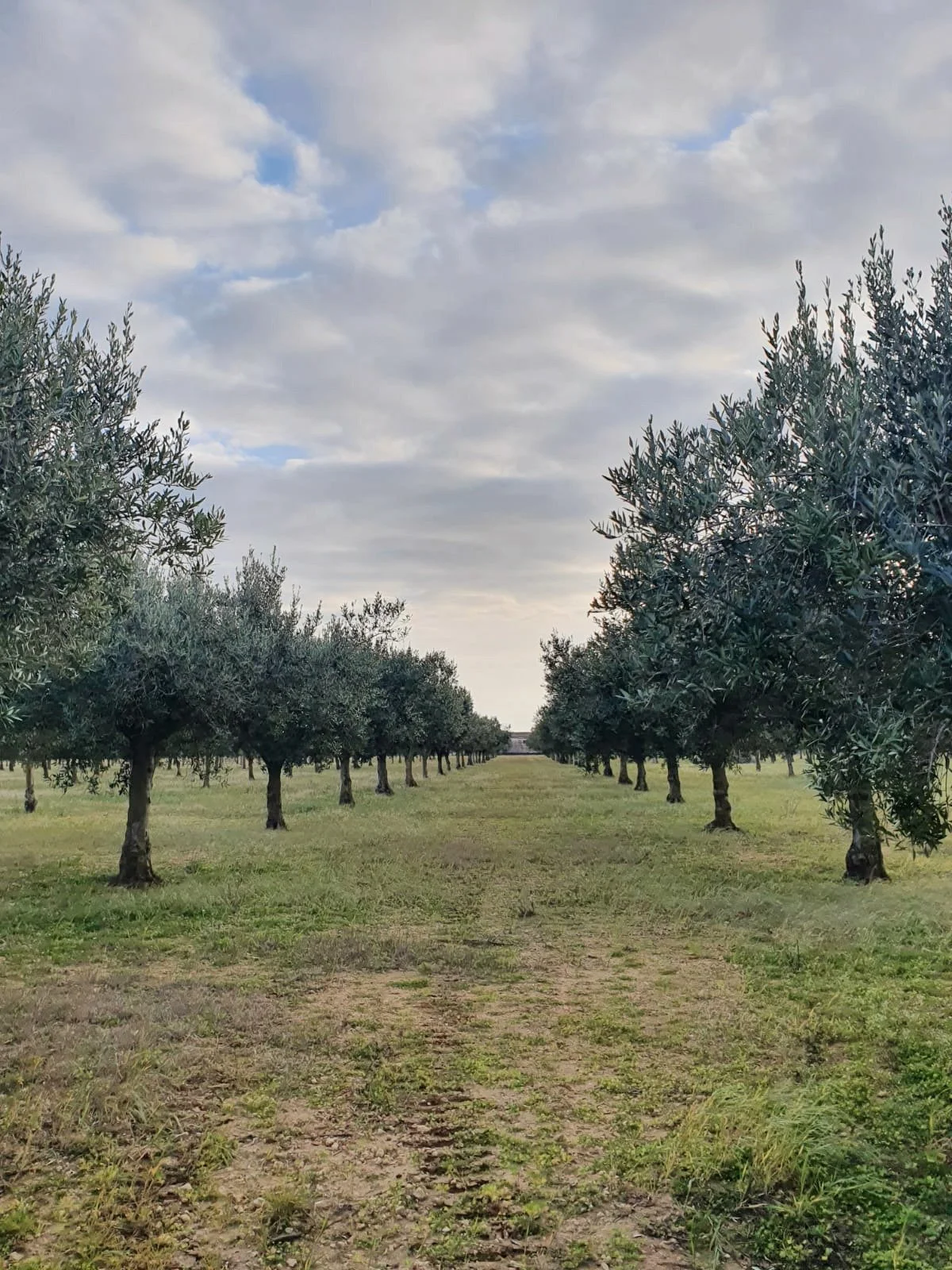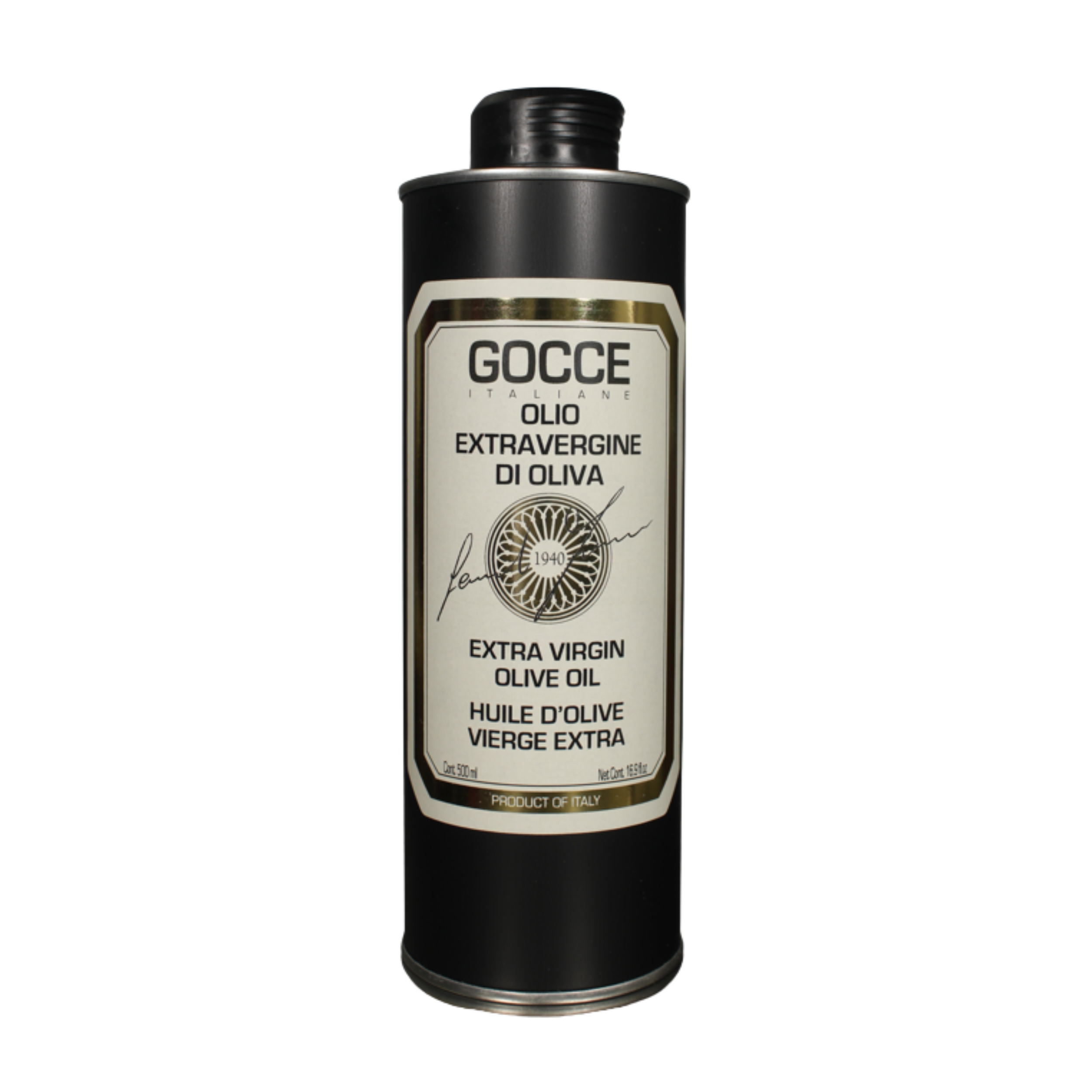How to Choose the Right Olive Oil: What to Look For and What to Avoid
When you walk through a grocery store aisle, it’s easy to feel overwhelmed by the rows of olive oil bottles which all claim to be “extra virgin,” “cold-pressed,” or “Italian.” Prices range dramatically, and for most shoppers, it’s hard to know what truly separates a $10 bottle from a $40 one.
At Fratelli del Vino, we import Gocce Italiane Extra Virgin Olive Oil, a single-estate Italian olive oil that meets every standard of authenticity and quality we’re about to discuss. But beyond our own product, we believe it’s important to educate people on what makes olive oil real, and how to identify a good one wherever you shop.
Know Where It Comes From
The story of olive oil starts with geography. Italy, Spain, and Greece produce the majority of the world’s olive oil, but not all of it is equal in quality or traceability.
When choosing olive oil, look for specific origins — not vague phrases like “Packed in Italy” or “Product of the EU.” A truly authentic bottle will name the region (e.g., Emilia-Romagna, Tuscany, or Sicily) or even the estate where the olives were grown and pressed.
The best producers grow, harvest, press, and bottle all on the same property, which is known as single-estate production. This ensures that the oil represents one terroir, one climate, and one harvest.
Sicilian Olive Orchard Owned by Gocce Italiante
Freshness Is Key
Olive oil is a fresh product — it’s not meant to age like wine. Over time, it loses flavor, aroma, and beneficial antioxidants.
When buying, look for a harvest date on the label. Not a “best by” or “expiration date,” but the actual date when the olives were picked and pressed.
A good rule:
The fresher, the better.
Olive oil is typically best within 12–18 months of harvest.
Unfortunately, most supermarket olive oils have been sitting in warehouses for months and sometimes years before reaching the shelf.
Cold-Pressed and Mechanically Extracted
High-quality extra virgin olive oil is made purely through mechanical extraction, not chemical processing or heat. This is what “cold-pressed” means: the olives are crushed and the oil is extracted without exceeding about 80°F (27°C). This preserves the delicate aromatic compounds that give real olive oil its fruitiness, bitterness, and peppery finish. Cheap or mass-produced oils often use heat or solvents to pull more oil out of the pulp, a process that destroys flavor and health benefits.
Beware of Blends and Adulteration
One of the olive oil industry’s biggest scandals is adulteration, or mixing premium olive oil with cheaper oils such as canola, soybean, or sunflower.
These blended oils are then labeled as “extra virgin,” even though they’re not.
Signs of adulteration:
Suspiciously low price points
No mention of region or estate
Light or pale color
Generic labeling (“Imported from Italy,” “Mediterranean blend,” etc.)
True olive oil should contain nothing but 100% olive juice from one harvest and one place.
Harvesting and Pressing Time
Once an olive is picked, the clock starts ticking. Within hours, the fruit begins to ferment and degrade. Reputable producers press their olives within 24 hours and often within the same day to capture the highest flavor and antioxidant content. Mass-market producers, on the other hand, may wait days before pressing, resulting in oils with flat, sour, or musty flavors.
The Taste and Aroma Test
Your senses can tell you more than the label ever will.
A genuine Italian extra virgin olive oil should have:
A fresh aroma reminiscent of green grass, artichoke, tomato leaf, or almond.
A balanced flavor — fruity at first, then slightly bitter and spicy on the finish.
That pleasant peppery kick you feel at the back of your throat is actually a sign of polyphenols, natural antioxidants that protect the oil and your health. If your oil tastes bland, greasy, or metallic, it’s likely old or adulterated.
Packaging and Storage Matter
Olive oil is highly sensitive to light, heat, and oxygen. The best producers use dark glass bottles or metal tins to protect the oil. Avoid oils sold in clear plastic or glass — these allow light to break down the compounds that make olive oil aromatic and nutritious. At home, store your bottle in a cool, dark place (not near the stove). Once opened, use it within 3–6 months for the best flavor.
Supporting Small Producers
Every high-quality olive oil represents generations of craftsmanship. Small Italian farms harvest by hand, press in small batches, and bottle on-site. They produce less volume, but the result is unmatched.
Buying these oils whether from Fratelli del Vino’s Gocce Italiane or another reputable artisan supports families, sustainability, and a 4,000-year-old agricultural tradition.
The best oils come from producers who treat olives not as a commodity, but as a craft. They harvest early, press immediately, and let their land speak through the flavor in every drop.
At Fratelli del Vino, we believe that Gocce Italiane Extra Virgin Olive Oil embodies everything a true Italian olive oil should be: single-estate, cold-pressed, and full of life. Whether you use it for cooking, finishing, or tasting straight off the spoon, it’s a reminder of how simple, honest ingredients can transform food and connect us to the land they come from.


